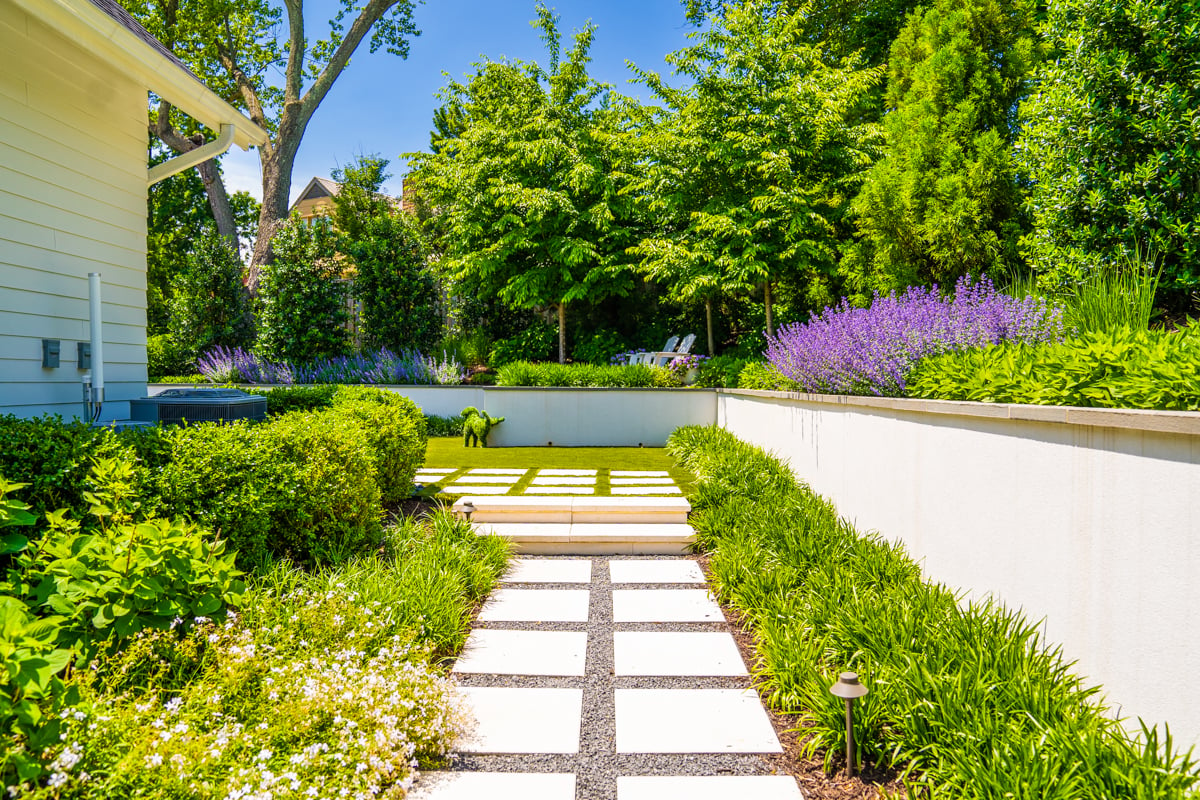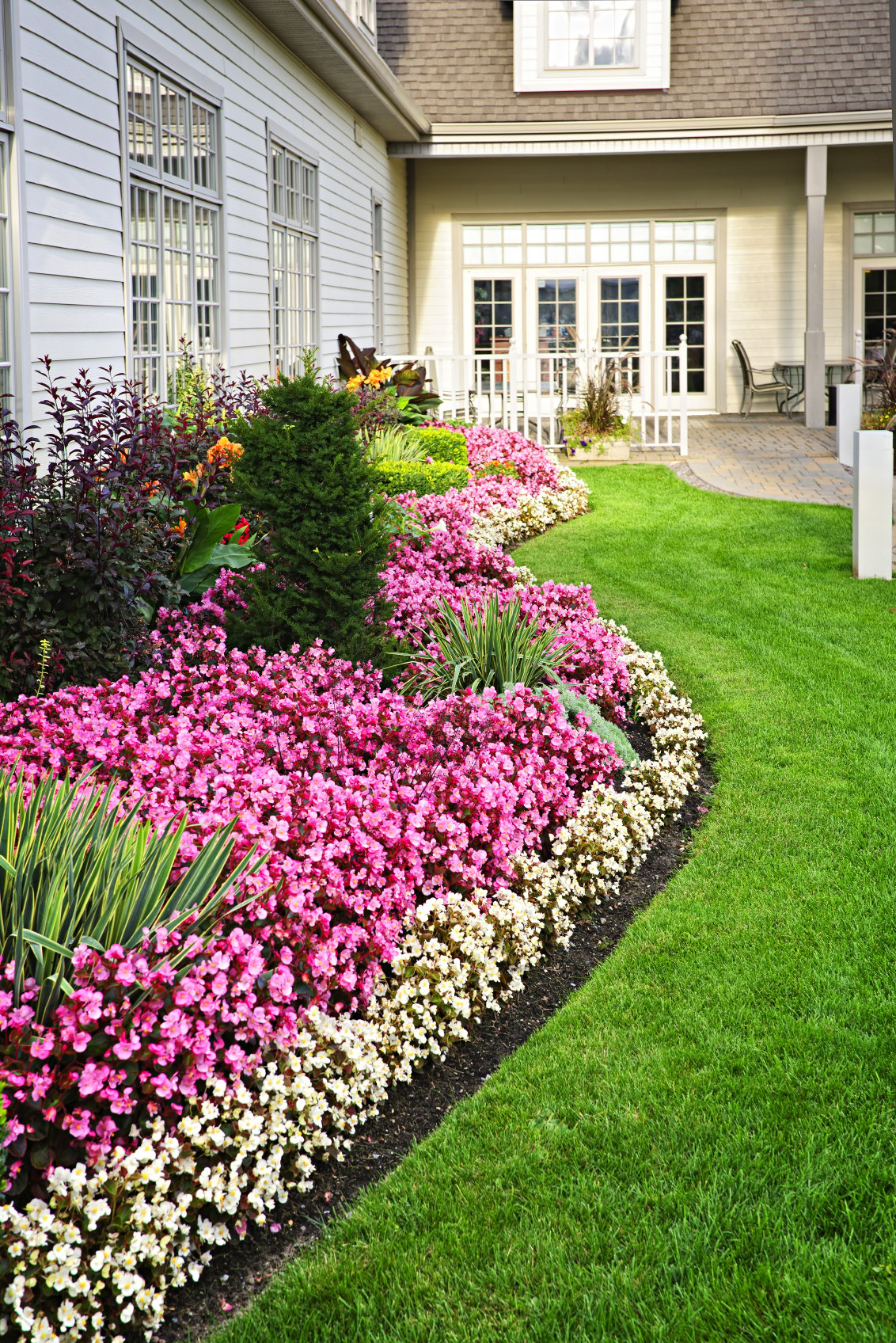Exploring Various Kinds Of Landscaping to Enhance Your Outdoor Atmosphere
Landscaping plays an essential role in specifying exterior rooms. Numerous designs, from typical yards to modern minimal layouts, provide unique benefits for boosting looks and feature. Including components like xeriscaping and native plants can contribute to ecological equilibrium. Comprehending the interplay of hardscape and softscape is necessary for creating inviting atmospheres. The selections offered can be frustrating, motivating one to mirror on which style finest aligns with their vision for an exterior shelter.
Traditional Yard Landscaping

While numerous modern-day gardens welcome minimalism and indigenous growings, typical yard landscaping remains a valued approach that emphasizes proportion, framework, and ornamental functions. This style usually includes official geometric layouts, where flowerbeds, pathways, and bushes are prepared with accuracy. Central focal points, such as water fountains or sculptures, attract the eye and give a feeling of harmony.Traditional landscape design regularly includes a selection of plant types, showcasing seasonal flowers and evergreen aspects. Classic bushes, perennials, and annuals develop vibrant colors and structures throughout the year. Additionally, arches, trellises, and pergolas add upright interest and work as assistance for climbing plants, boosting the overall aesthetic.The use of all-natural materials, such as stone and wood, further enhances the traditional landscape, adding to a timeless quality. Ultimately, this design welcomes relaxation and enjoyment, making it a beloved choice for those seeking an attractive exterior setting.
Modern Minimalist Landscape Design
Modern minimal landscape design highlights simpleness and functionality, identified by clean lines and open rooms. Key characteristics consist of a minimal plant scheme and thoughtful hardscape design that focuses on usability and visual charm. Efficient plant choice techniques additionally boost the minimal technique, developing tranquil exterior environments that urge relaxation and consideration.
Key Characteristics of Minimalism
An expanding trend in landscaping is the accept of minimalism, defined by simpleness and performance. Minimal landscaping concentrates on clean lines, open areas, and a restricted shade combination, advertising a feeling of harmony. Elements are carefully curated to stay clear of mess, permitting each component to stand apart. Using natural products, such as stone and timber, improves the organic feeling while maintaining a visual equilibrium. In addition, minimalist designs often include geometric shapes, which can produce visual passion without overwhelming the detects. Water functions might be consisted of, offering as centerpieces that boost tranquility. On the whole, minimalism in landscape design highlights the elegance of restraint, allowing nature's fundamental high qualities to beam through in an unified outside setting.
Plant Selection Approaches
Effective plant choice is vital for accomplishing the desired aesthetic in contemporary minimalist landscape design. The focus must be on simpleness, making use of a minimal combination of plants that enhance each various other and the surrounding atmosphere. Indigenous plants are commonly excellent, as they call for much less upkeep and water, advertising sustainability. Choosing types with differing elevations and structures can add aesthetic passion without overwhelming the space. Grouping plants in clusters instead than spreading them boosts cohesion and reinforces the minimal motif. Evergreen varieties can provide year-round framework, while seasonal blooms present refined color modifications. Inevitably, the goal is to create a serene outside space that embodies harmony and harmony with thoughtful plant selections.
Hardscape Design Principles
Essential elements in hardscape design substantially add to the general aesthetics and functionality of minimalist landscape design. This design strategy highlights tidy lines and understated materials, creating an uncluttered aesthetic experience. Trick parts include paths, outdoor patios, and retaining walls, which not just specify spaces however additionally enhance accessibility and use. Making use of products such as concrete, rock, and timber is prevalent, mirroring a natural yet modern-day visual. Including balanced formats and geometric forms further reinforces the minimal ideology, permitting for an unified blend with surrounding greenery. Furthermore, correct drain and disintegration control are essential factors to consider, guaranteeing longevity and sustainability. Ultimately, effective hardscape design functions as a foundation that matches softscape components while preserving balance and simpleness in outside settings.
Cottage-Style Landscape design
Cottage-style landscape design provides a fascinating approach to producing welcoming outdoor spaces. By integrating captivating plant combinations, this style cultivates a feeling of heat and fancifulness. The emphasis on comfy, distinct areas motivates leisure and enjoyment of nature.
Enchanting Plant Combinations
Although many home owners look for to create a picturesque outdoor space, accomplishing the appeal of cottage-style landscaping frequently depends upon thoughtful plant mixes. Vivid blossoms, rich vegetation, and fragrant natural herbs can be skillfully matched to stimulate a feeling of fancifulness and nostalgia. For example, incorporating lavender, sissies, and foxgloves creates a colorful tapestry that draws in pollinators while providing a wonderful scent. Integrating ornamental turfs like miscanthus can include structure and activity, enhancing the softer flowers. In addition, blending yearly and seasonal plants assurances constant shade throughout the periods. Making use of climbers, such as clematis or honeysuckle, can enhance vertical passion. Generally, these combinations not only beautify the landscape but likewise promote a welcoming and captivating environment.

Cozy Outdoor Areas
Creating comfy outside spaces requires a cautious blend of convenience and beauty, complementing the lively plant mixes found in cottage-style landscape design - Retaining Wall Installation. These areas frequently feature inviting seating arrangements, such as weather-beaten wood benches or cushioned chairs surrounded by lavish greenery. Soft illumination, like fairy lights or lanterns, adds heat, changing the room into a peaceful retreat. Incorporating aspects such as trellises adorned with climbing up roses or fragrant natural herbs enhances sensory experiences. In addition, pathways constructed from rustic stones welcome expedition and link with nature. Ornamental touches like birdbaths or whimsical yard art contribute to a feeling of fancifulness. Eventually, the objective is to develop a charming atmosphere that urges relaxation and pleasure of the beauty surrounding these cozy exterior havens
Xeriscaping for Water Preservation
Just how can communities balance aesthetic landscape design with the pushing requirement for water conservation? Xeriscaping emerges as a practical remedy, promoting sustainable techniques that minimize water usage while improving outdoor charm. This landscaping approach focuses on utilizing drought-resistant plants indigenous to the area, which need substantially less water than traditional yards. By integrating compost and effective watering systems, xeriscaping lowers evaporation and overflow, more preserving priceless water resources.Communities can produce aesthetically enticing landscapes through mindful planning, picking a varied selection of textures and colors that prosper in dry conditions. Furthermore, xeriscaping encourages the usage of ornamental rocks and attractive gravel, offering functional and attractive options to yard lawns. As communities welcome this green technique, they not just decrease their water usage yet likewise promote biodiversity and durability in their local environments. Eventually, xeriscaping functions as a presentation of the consistency in between visual charm and ecological responsibility.
Hardscape Style Aspects
Hardscape style components play a necessary duty in boosting outside rooms by supplying structure and capability. These non-plant features, such as outdoor patios, decks, wall surfaces, and walkways, produce visual rate of interest while serving functional purposes. Using materials like brick, concrete, and stone, hardscaping adds to the general aesthetic allure and sturdiness of a landscape.Incorporating hardscape aspects can define locations within a yard, assisting motion and urging social communication. For example, a well-placed path can attach different areas of the yard, while retaining wall surfaces can manage elevation changes and protect against erosion.Furthermore, hardscape style can boost availability and safety and security, offering steady surface areas for walking or lounging. Efficient combination of hardscape components complements soft landscape design, guaranteeing a well balanced outside atmosphere. Inevitably, thoughtful hardscape style boosts not just the appeal of outdoor spaces but likewise their functionality, making them more welcoming and practical for visitors and property owners alike.
Exterior Living Areas
While exterior space provide a smooth blend of convenience and nature, they function as crucial expansions of a home, boosting lifestyle and recreation. These locations can consist of patios, decks, or exterior cooking areas, created to promote leisure and entertainment. Landscape Lighting Installer. By incorporating practical furnishings and trendy design, homeowners create welcoming atmospheres for celebrations or peaceful evenings.The assimilation of shade structures, such as pergolas or awnings, protects versus the aspects while keeping an open feel. Fire pits and outside heaters extend use into cooler months, supplying heat and ambiance. Additionally, integrating lighting features enhances the room's usability after sundown, creating a wonderful evening atmosphere.Landscaping aspects, such as paths and borders, further specify these areas, assisting activity and adding visual charm. Inevitably, outside living rooms transform backyards into flexible hideaways, advertising a lifestyle that welcomes both nature and comfort
Native Plant Landscaping
Indigenous plant landscaping highlights making use of aboriginal plants to produce harmonious and sustainable outside environments. This approach not only boosts biodiversity but additionally saves water and decreases the need for chemical fertilizers and pesticides. By choosing plants that are native to a certain region, house owners can assure that their landscapes are well-adapted to neighborhood soil and climate conditions, leading to lower upkeep requirements.Additionally, native plants offer crucial habitats for local wild animals, consisting of birds, bees, and butterflies, promoting ecological health and wellness. Landscape makes that include these plants frequently feature naturalistic layouts that imitate regional ecosystems, promoting a local color and connection to the environment.Furthermore, indigenous plant landscaping can contribute to dirt security and disintegration control, making it an environmentally accountable option. On the whole, this practice not just enhances exterior rooms but additionally sustains the regional environment, producing a sustainable balance in between human task and nature.

Often Asked Concerns
Exactly How Can I Select the Right Landscape Design Design for My Home?
Picking the ideal landscaping style for a home entails evaluating the building's design, Outdoor Lighting Installer climate, and individual preferences. Retaining Wall Installation. Investigating different designs and consulting experts can offer advice to develop an unified outside room customized to specific requirements
What Is the Average Price of Professional Landscape Design Providers?
The ordinary cost of specialist landscape design solutions normally ranges from $1,000 to $5,000, depending on project location, intricacy, and size. Homeowners should consider getting multiple quotes to assure they get fair prices and high quality service.
How Typically Should I Maintain My Designed Backyard?
The regularity of preserving a landscaped yard usually depends upon the plants and attributes existing. Typically, regular upkeep every couple of weeks is suggested, with seasonal tasks boosting in regularity throughout optimal expanding seasons for perfect wellness and aesthetics.
Exist Landscaping Alternatives for Tiny Urban Spaces?

Different landscape design choices exist for tiny city spaces, consisting of vertical gardens, container plants, and roof gardens. Including these elements can make best use of restricted locations while providing plant, enhancing visual appeals, and boosting air top quality in urban atmospheres.
What Plants Are Ideal for Drawing In Regional Wildlife?
The ideal plants for bring in local wildlife include indigenous flowering types, berry-producing hedges, and varied lawns. These plants supply important food and habitat, cultivating a flourishing ecological community that sustains various birds, bugs, and little mammals. Lots of house owners seek to produce an attractive outside space, achieving the beauty of cottage-style landscaping typically hinges on thoughtful plant mixes. Developing relaxing exterior spaces calls for a careful mix of comfort and beauty, matching the lively plant combinations found in cottage-style landscape design. Native plant landscape design emphasizes the use of indigenous flora to develop harmonious and lasting outdoor atmospheres. Landscape develops that integrate these plants frequently feature naturalistic formats that mimic local ecosystems, promoting a sense of place and link to the environment.Furthermore, native plant landscape design can contribute to dirt stability and erosion control, making it an eco liable choice. Various landscape design options exist for tiny metropolitan rooms, including upright gardens, container plants, and rooftop gardens.